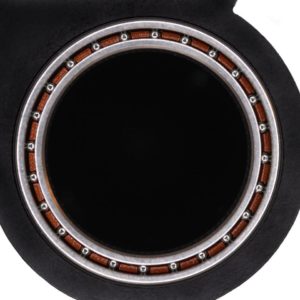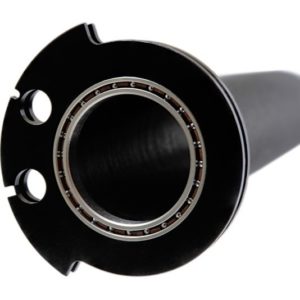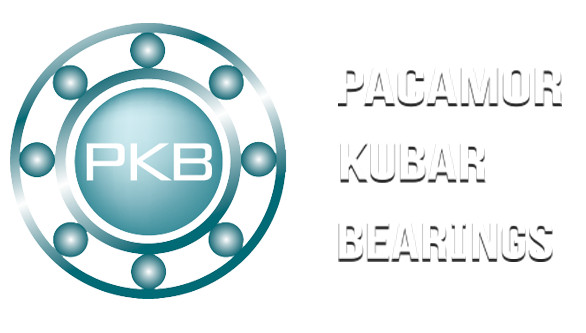Bearing Fit Chart – Shaft and Housing
Bearing Fit Chart – Shaft and Housing
 The following tables are a guide for establishing shaft and bearing fits for miniature and instrument bearings, when the expansion coefficients of the shaft and housing are similar or when the operating temperature differential between them is nominal. In other conditions, modification in fits and internal clearance may be required.
The following tables are a guide for establishing shaft and bearing fits for miniature and instrument bearings, when the expansion coefficients of the shaft and housing are similar or when the operating temperature differential between them is nominal. In other conditions, modification in fits and internal clearance may be required.
Shaft Fits
| Radial Clearance Range | |||||||
| Operating Conditions |
Load | Speed | Shaft Diameter | Average Fit | Fit Range | Radial Load | Thrust Load Springs |
|---|---|---|---|---|---|---|---|
| Rotating Shaft | Light | Low | B- 0.0002 B- 0.0004 |
0.0002L | 0 0.0004L |
K25 | K36 TO K58 |
| Light Medium |
High Low to High |
B- 0.0001 B- 0.0003 |
0.0001L | 0.0001T 0.0003L |
K36 | K36 TO K58 | |
| Heavy | High | B- 0.0000 B- 0.0002 |
Line to Line | 0.0002T 0.0002L |
K36 | K58 | |
| Stationary Shaft | Normal | Low to High | B- 0.0002 B- 0.0004 |
0.0002L | 0 0.0004L |
See Rotating Housing | |
| B = Nominal Bearing Bore | L = Loose Fit | T = Tight Fit | |||||
Housing Fits
| Radial Clearance Range | |||||||||||||
| Operating Conditions |
Load | Speed | Housing Diameter | Average Fit | Average Fit | Fit Range | Fit Range | Radial Load | Thrust Load Springs |
||||
|---|---|---|---|---|---|---|---|---|---|---|---|---|---|
| Rotating Housing | Light | Low to High |
|
0.00005T | Line to Line | 0.0002L 0.0003T |
0.0002L 0.0002T |
K36 | K58 | ||||
| Medium to Heavy | Low to high |
|
0.00015T | 0.0001T | 0.0001L 0.0004T |
0.0001L 0.0003T |
K36 | K58 | |||||
| Stationary Housing | Light to Heavy | Low to High | D +/-0.0002 D- 0.0000 |
0.00025L | 0.0002L | 0 0.0005L |
0 0.0004L |
See Rotating Shaft | |||||
| D = Nominal Bearing OD | L = Loose Fit | T = Tight Fit | |||||||||||

One of our SR1878 bearings, mounted in a Zero-Resistance throttle tube
|
||||||||||||||||
* For closer running accuracy or reduced axial play K13 internal clearance may be used provided that the fit of the outer ring is line to line or looser
** For closer running accuracy or reduced axial play K25 internal clearance may be used provided that the fit of the outer ring in the housing is line to line or looser.
Consult our Engineering Department for unique applications. sales@pacamor.com
Line to Line to slightly loose shaft and housing fits are desirable for most applications. Interference fits may be necessary to prevent one bearing ring from turning relative to its mating part under heavy loads or when cycle vibration is present. An interference fit causes a 50-80% loss in radial play. The contact angle of a radial bearing under axial load is related to the radial play remaining in the bearing after installation. A higher assembled radial play means a higher contact angle. A low contact angle is desirable for pure radial loads. Higher contact angle is desirable for axial load applications. Axial play is proportional to the radial play in the bearing. One of the rings in the bearing assembly must be free to move to prevent axial pre-loading.
Miniature and instrument ball bearings are used in high-precision applications to mate parts, control movement, and provide rotational and oscillating functionality. Aircraft, medical instruments, computers, flow meters, and pick-and-place robots are just some of the challenging applications they are found in. For example, some high-speed instrument bearings travel at speeds approaching 500,000 rpm. Flow meter bearings travel at slower speeds but face a unique set of pressure, corrosion, and environmental challenges. Finally, many miniature bearings are used in pulling and stressing man-made vacuums and the natural vacuum of space.
Within the assembled mechanism, the fit of the ball bearing on its mating components is vital to maximizing bearing life. If the fit is too loose, the bearings slide around on the shaft, eliminating the advantages gained by selecting a ball bearing in the first place. If the fit is too tight, the bearing integrity may be compromised by reduction of radial play in the assembly. The perfect fit enables bearings to run at peak performance for maximized end-product life. There are three main types of shaft and housing fits. A loose fit is when the bore of the inner ring is slightly larger than the outer shaft diameter. A line-to-line assembly is when the bore of the inner ring of the bearing and the outer diameter of the shaft are the same. With a tight fit, the bore of the inner ring of the bearing is slightly smaller than the outer shaft diameter. Tight fits are also called interference or press fits, because bearings in these assemblies are pressed onto shafts.
Slightly loose shaft-to-housing fits are suitable for most applications, while line-to-line fits often provide the best performance. If bearings are assembled on a shaft that is too large (creating a press-fit) the inner ring may stretch slightly. When this occurs, the bearing’s radial play can be diminished or even eliminated altogether.
If extreme fits are undesirable or in certain applications, selective assembly of coded bores matched with similarly graded shaft and housing diameters may be utilized. This approach is usually more economical than a reduction in diameter tolerances.
- Bore and O.D. Coding Page
- ABEC Tolerances Page
- Recommended Shoulder Dimensions Page
- Link to Installation Page






